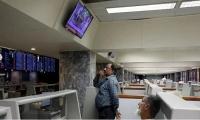Governments are charged with the responsibility to propel economic development, playing a facilitating role in the creation of a conducive atmosphere for different sectors of the economy – enabling them to contribute to the overall development effort and towards promoting the wellbeing of the masses.
Conflicting interests and the diversity of stakeholders make it quite difficult for governments to perform a balancing act. That is why the economic management of an economy, especially a developing country like Pakistan, is an extremely onerous undertaking. The budget is considered as the most important tool of economic management and rightly invokes lot of interest among different sections of society as it one way or the other affects the lives of the people.
People tend to judge a budget from the perspective of their own interests. This is why it is absolutely impossible to have a unanimous view about the impact of the budget on the economic landscape of the country. The budget for 2016-17 has received a similar treatment. The opposition, sticking to its politicking mode, has out rightly rejected it terming it a drone attack on the masses. Some other comments made are: it is a mix of relief and burdens; it is a reasonable budget; economic targets have been missed; agriculture and exports have performed dismally; it is a routine exercise; it is people friendly budget; it is anti-people budget; it is an elitist budget and the budget protects the interests of the corporate sector.
The foregoing evaluations surely the reflect positive and negative biases of the concerned people and different segments of society.
A realistic evaluation of the budget requires looking at it from the perspective of the responsibilities that the government is supposed to shoulder when managing the economy. Looking at the budget from the standpoint of development, there is a discernible effort on the part of the government to expand and upgrade development activity in the country. The allocation for PSDP stands at Rs1,675 billion which represents an 11 percent increase over the last year.
The major thrust of the budget remains on agriculture, industry, energy and infrastructure development. In addition to PSDP, Rs124 billion have been set aside for uplift projects under the CPEC. A sense of urgency and commitment has been exhibited to fix the maladies afflicting the under-performing agricultural sector as well as exports. For agriculture, in addition to the package of Rs341 billion announced in March, 2016, the government has brought yet another package comprising subsidies on inputs and electricity – a long outstanding demand of the farmers. In addition to this customs duty on import of machinery for dairy, livestock and poultry sector has been reduced.
To revitalise the export sector and nudge investments in the industrial sector, imaginative and prudent measures like continuing the scheme of drawback on local taxes, zero-rating of export-oriented sectors such as textile, leather, sports goods, surgical goods and carpets, duty free import of machinery and finalisation of all the pending cases of sales tax refunds are timely steps. These initiatives will increase new investments in both the agricultural and industrial sectors besides creating new jobs. From the perspective of creating a congenial atmosphere for different sections of the economy, the foregoing policy initiatives are a ranting testimony to the government’s commitment in this regard.
In raising additional revenues to meet the burgeoning needs for socio-economic development and other indispensable expenditures, a conscious effort has been made to broaden the tax base. The strategy in this regard is to further squeeze the budget deficit to 3.8 percent through increasing reliance on the generation of indigenous resources. A revenue target of Rs3,621 billion has been fixed for 2016-17 as against Rs3,104 last year, representing a substantial increase of 16 percent. New taxes to the tune of Rs160 billion have been imposed.
The imposition of new taxes is the trickiest part of the budget. People – justifiably or otherwise - -tend to show an aversion to new taxes. But the fact is that it is an inevitable undertaking. However, the redeeming factor is that a well-considered effort has been made to lay more emphasis on direct taxes.
As for relief to the poorer sections of society and poverty alleviation, the budget does offer something for everybody. The minimum wage of the labourer has been enhanced to Rs14,000 from Rs13,000. Notwithstanding the fact that the rate of inflation was at the lowest ever level of three percent, the salaried class has been given a raise of 13.5 percent and pensioners also have been favoured with a 10 percent increase in their pensions.
Millions of people are going to benefit from these initiatives. The allocation for the youth programmes launched by the government has also been raised to Rs20 billion (from Rs19 billion). Already thousand of youth across the country have benefitted from these programmes.
Poverty alleviation continues to be the focus of the government’s attention. Allocation for BISP has been raised to Rs115 billion as compared to Rs102 billion last year; compared to the allocation for 2013, this marks a nearly three-fold increase. It is estimated that 5.3 million families will benefit from this scheme this year. In June 2013 the number of beneficiary families was 3.7 million. The stipend of Rs12,000 per annum fixed in 2008 has been enhanced to Rs18,800. Similarly, the budget of the Baitul-Mal has also been increased from Rs2 billion to Rs4 billion.
It is quite evident from the foregoing discourse that the government has more or less tried to do its utmost under the given circumstances and available resources to perform its responsibilities with unswerving commitment. Its handling of the economy during the past three years has been quite satisfactory.
It is the ultimate outcome which really matters. And the truth is that, notwithstanding some targets being missed, the economy achieved a growth rate of 4.71 percent. Budget deficit was brought down to 4.3 percent from 5.3 percent last year. Inflation was the lowest ever. Per capita income increased from $1,516.8 to $1,560 and unemployment rate went down to 5.9 percent from 6.2 percent.
The writer is a freelance contributor.
Email: ashpak10@gmail.com
According to Chanakya, secret of strong nation lies in ability to protect its citizens
Rapid economic progress was made possible under Modi's leadership if not ‘Modi's guarantee’
Pakistan was considered water-abundant country, with per capita water availability being 5650 cubic meters in 1951
Shrine of Mian Mir.—TheNews/FileMy history professor once referred to a theory that says the developmental telos of...
If Pakistan does not take prompt and decisive action, it could find itself at forefront of world's first water conflict
Please note that dam survey team from World Bank had proposed building of this dam in 1955







